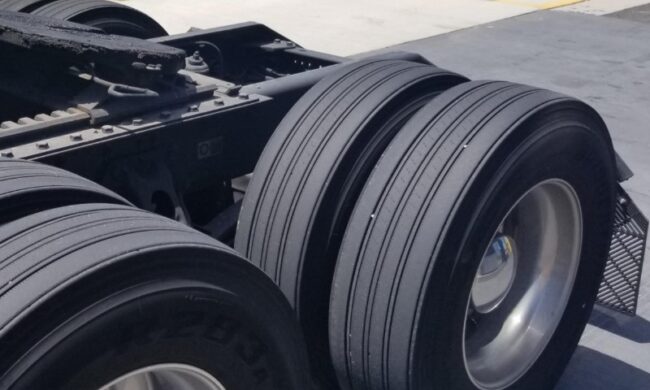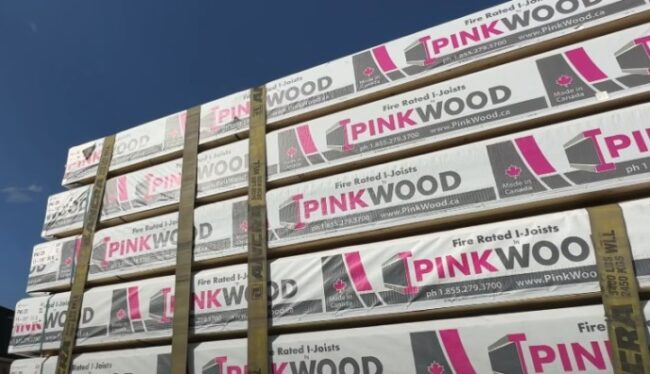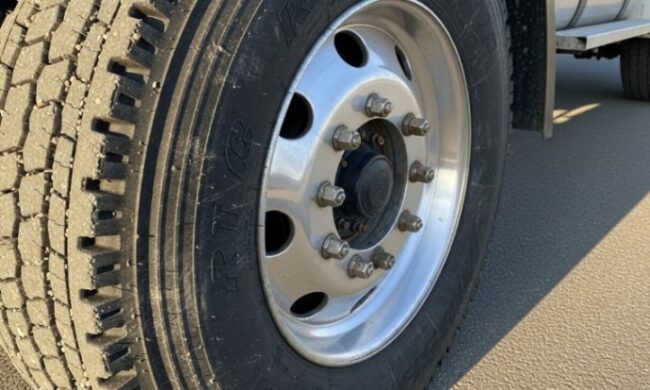Buying a used commercial truck sounds straightforward: find something in budget, kick the tires, take a spin, and if it doesn’t rattle your teeth out, sign the papers. Reality is uglier.
The wrong buy can mean downtime you can’t afford, fines you never budgeted, and repair bills that keep the truck parked longer than it runs.
It doesn’t matter if you are after a box truck, day cab, step van, or shuttle; the smartest move is treating the purchase like a compliance project, not a quick deal. That is why we’re going to take a look at the traps that eat up buyers, and how to sidestep them. Let’s get started.
Key Points
- Always inspect like a DOT officer, not just a casual buyer.
- Verify VIN, recalls, and title history through official databases.
- Match the truck’s emissions compliance to where it will operate.
- Price first-year repairs and compliance costs into your offer.
Why the Small Mistakes Hurt the Most
A commercial vehicle lives under more scrutiny than any personal car. Roadside inspectors, emissions programs, and insurance carriers are waiting to find what you missed.
The Commercial Vehicle Safety Alliance logs annual data showing that more than one in five trucks inspected gets parked for defects. In 2024, the vehicle out-of-service rate hovered at 23 percent . Most violations were the same handful of basics: brakes, tires, lights, and securement.
The lesson? If you don’t check what inspectors check, you are buying downtime. If you don’t pull official histories, you are gambling with title, emissions, and safety records. Here are the top mistakes to avoid if you want a truck that earns instead of drains.
Mistake 1: Skipping a DOT-Level Inspection
A five-minute walkaround doesn’t cut it. Enforcement officers don’t “eyeball” trucks; they measure, test, and log.
The CVSA’s International Roadcheck targets brakes, tires, lights, and cargo securement, and those categories consistently top the list of failures.
How to Mimic Roadside Scrutiny
- Brakes : Pull drums when needed, measure lining and drum wear, check hoses, valves, and ABS codes.
- Tires : Measure tread to federal minimums: 4/32 inch on steer, 2/32 inch on others, and check for exposed cords or sidewall damage.
- Lighting : Operate every lamp, confirm weatherproof harness repairs.
- Cargo Securement : Inspect anchor points, rub rails, tiedowns. Compare against FMCSA standards for working load limits.
Bring a shop that performs DOT annuals daily, and ask them to flag anything that would fail under CVSA criteria. Every defect they note is a dollar off your offer.
Mistake 2: Ignoring Legal Tire Rules on Steer Axles

Many buyers just glance at tread. That’s not enough. Federal rules limit what you can mount up front. Buses cannot run regrooved, recapped, or retreaded tires on the front.
Truck tractors also have restrictions on regrooved casings depending on capacity. Overloading or underinflating steer tires is illegal. If a truck is sitting on non-compliant steer tires, bake in the cost of replacements.
Brands such as Hubtrac reifen from Austria highlight in their specifications which models are compliant with steer axle rules, making it easier to spot the right fit.
Mistake 3: Failing to Check Recall Status by VIN
A truck may look sound, but a recall on its steering, brakes, or fuel system can park it instantly.
Use NHTSA’s VIN search to pull recall status and build data. Print screenshots and bring them to the seller.
If open recalls exist, require written proof of completion before money changes hands. Otherwise, you may be the one footing downtime and dealer service visits.
Mistake 4: Skipping Title and Brand Checks in Official Databases
Never trust only the glossy Carfax-style report. For commercial units, the National Motor Vehicle Title Information System (NMVTIS) is the real shield against fraud.
NMVTIS aggregates salvage events, junk designations, odometer history, and title brands reported by insurers and recyclers.
Why NMVTIS Is Crucial for Work Trucks
- Many have lived rough fleet lives, survived floods, or gone through multiple insurance events.
- Cosmetic reconditioning often hides structural or water damage.
- NMVTIS is concise: it focuses only on five critical fraud and safety indicators.
Pull the report from an approved provider, not a random marketplace PDF. If brands or salvage events don’t match the seller’s story, walk.
Mistake 5: Buying a Truck That Can’t Legally Operate Where You Run
Regulatory eligibility is just as real as mechanical condition.
- California : The Clean Truck Check went live October 2024 . Every truck operating in-state must test emissions periodically, starting semi-annually, moving to quarterly for OBD-equipped models. Out-of-state plates are not exempt.
- EU : Directive 2014/45/EU requires annual roadworthiness testing for heavy trucks and buses after the first year. Failures are classified by risk, and you cannot register without passing.
- UK : MOT test histories are searchable online, with odometer logs and failure reasons that expose hidden defects.
If your routes touch these markets, verify compliance before you buy. Otherwise, the truck might never legally turn a wheel.
Mistake 6: Overlooking Cargo Securement Gear

Anchor points and tiedowns may look like background details, but they map directly to violations. FMCSA requires systems that withstand 0.8 g forward deceleration and 0.5 g laterally.
Missing or worn securement hardware is one of the top reasons for roadside out-of-service orders. Price replacements or upgrades into your negotiation, especially if the truck carries irregular freight.
Mistake 7: Underestimating the Cost of Restoring Emissions Systems
A deal that looks too good often hides tampering. Trucks with deleted DPF, EGR, or SCR systems are illegal under the Clean Air Act .
Repairs to restore them can cost tens of thousands, not counting fines. If you see missing DEF tanks, mismatched sensors, or “off-road only” tuners, assume massive reclamation costs.
Better signal : a truck marketed as “California compliant” with intact OEM systems and recent particulate filter service.
Mistake 8: Assuming FTC Used Car Rule Applies
Don’t expect the FTC Buyers Guide protections. The rule usually covers used vehicles under 8,500 pounds GVWR, with limited exceptions.
Most medium and heavy commercial trucks fall outside. That means no standardized disclosure, no implied dealer protections. You must build your own checklist of disclosures.
Mistake 9: Skipping Fluid Analysis and ECM Data
Oil, fuel, and coolant samples catch hidden failures before they explode into downtime. Labs can detect bearing wear, coolant leaks, and injector issues invisible during inspection.
Pair this with an ECM data pull to confirm odometer accuracy, check fault code history, and review aftertreatment patterns like frequent regens or derates. Both reports give you leverage in negotiation.
Mistake 10: Forgetting SmartWay Knowledge
Fuel costs don’t stop at the sale. The EPA’s SmartWay program verifies aerodynamic devices, idle-reduction systems, and low rolling resistance tires with documented savings.
Used units often still carry skirts, tails, APUs, or LRR tires. If not, you’ll pay later. Compare your candidate against SmartWay specs to forecast real operating cost.
Mistake 11: Dismissing Lights and Tires as “Small Stuff”
Tires and lights might look like minor items, but CVSA lists them among the top five violations every year. Even a single blown marker lamp can hint at deeper wiring issues.
Tires with legal-looking tread may still fail under load rating or damage rules. Inspect with 49 CFR 393.75 open, not just your eyes.
Mistake 12: Forgetting Future Inspection Calendars
Where the truck passed last month doesn’t matter if your state or country demands a fresh test now.
- California : Semi-annual Clean Truck Check now, quarterly later. VIN schedules dictate deadlines.
- EU : Annual tests under Directive 2014/45/EU.
- UK : MOT history available online, with advisories and odometer logs.
Always plan downtime for compliance testing immediately after transfer.
Mistake 13: Not Building a Document Pack
Before you wire funds, you should have one tight folder with:
- VIN photos, decoder output, and OEM build sheet.
- NHTSA recall status showing zero open campaigns.
- NMVTIS report.
- Latest annual DOT inspection and major repair receipts.
- Emissions compliance proof if you run California.
If the seller cannot provide invoices for brake chambers, steer tires, or emissions repairs, assume you’ll buy them.
Mistake 14: Pricing Only on the Sticker

A low sticker hides high first-year costs. Ask: what does it take to make it legal day one, and what will it take to keep it legal for 12 months?
| System | Likely Early Costs | Reference |
| Tires | Steer tire replacements if non-compliant | 49 CFR 393.75 |
| Brakes & Lights | Frequent OOS categories, expect repairs | CVSA Out-of-Service Data |
| Emissions | Testing fees, potential repairs | CARB Clean Truck Check |
| Fuel & Idle | Lack of SmartWay kit raises fuel spend | EPA SmartWay |
Mistake 15: Trusting Photos Over Official Histories
Photos can hide a lot. Public databases cannot.
- North America : Use NMVTIS, NHTSA recall lookups, and your inspection photos.
- UK : Pull MOT history, note failures and mileage jumps.
- EU : Verify inspection certificates against Directive rules.
Photos show paint. Records show truth.
A Buyer’s Mini-Checklist
Before You See the Truck
- Decode VIN, run NHTSA recall search
- Purchase NMVTIS report
- Verify Clean Truck Check obligations if California is in play
- Pull MOT or EU roadworthiness records
At the Vehicle
- Perform DOT-style inspection targeting brakes, tires, lights, securement
- Verify steer tires against federal rules
- Inspect aftertreatment for tampering
- Sample fluids, pull ECM data
- Inventory securement gear
Before You Pay
- Price compliance repairs into your bid
- Make recall completion and emissions compliance sale conditions
Common Seller Lines (and What to Think)
- “It just needs a bulb.” Lighting defects often mean deeper wiring issues.
- “Tires still have life.” Federal rules, not guesswork, define legal life.
- “Deleted for reliability.” Illegal, costly to reverse, and a massive red flag.
- “Dealer says it’s all good.” Heavy trucks usually fall outside the FTC Used Car Rule – build your own protection.
Final Thoughts
A used commercial vehicle is not a gamble you want to take blind, unlike new trucks. The right buy is a truck that passes inspections, meets emissions where you run, and holds up for a year without surprise downtime.
The wrong buy is a painted-over headache that inspectors, regulators, and repair shops will happily remind you about.
If you borrow the playbook of roadside inspectors, lean on official VIN and title systems, and treat emissions and fluids as non-negotiable checks, you’ll avoid most traps. The money you save won’t just be on the sticker: it will be in the uptime that keeps you rolling.
